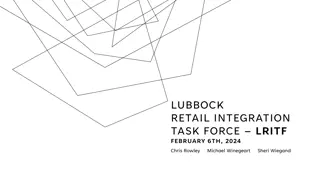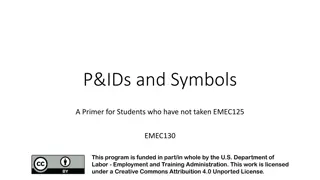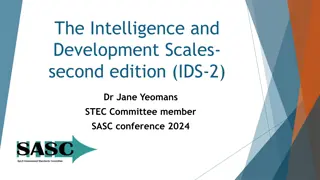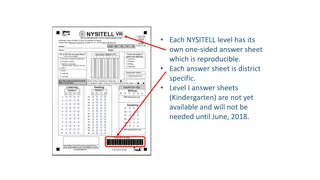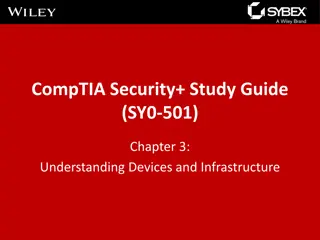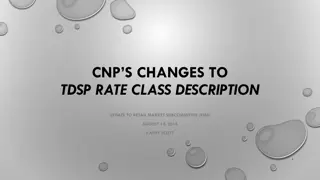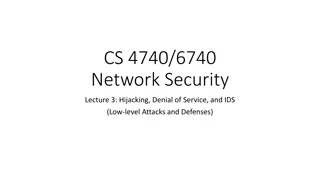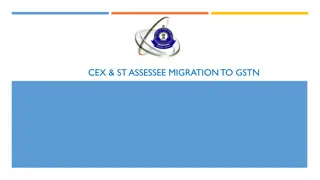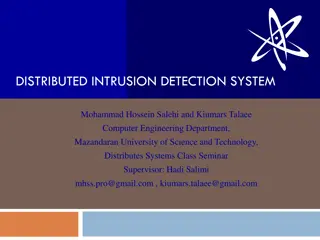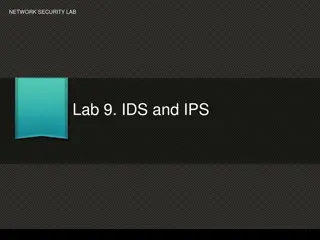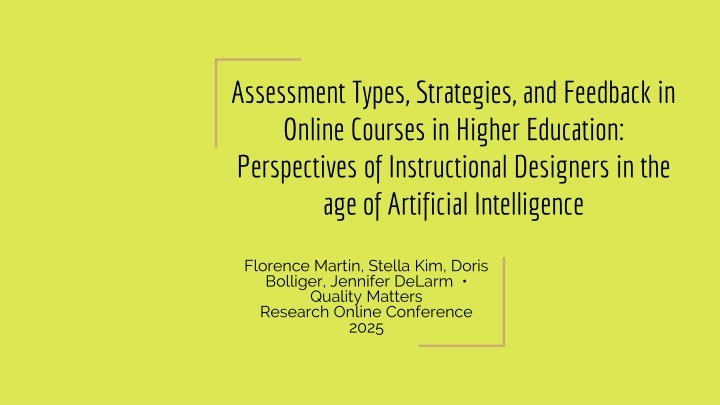
Enhancing Online Course Assessments Through AI-Driven Strategies
Explore the perspectives of instructional designers on assessment types, strategies, and feedback in online higher education courses, with a focus on aligning assessment choices with learning outcomes, integrating diverse assessment strategies, incorporating various feedback formats, and leveraging AI benefits and challenges for assessments.
Download Presentation

Please find below an Image/Link to download the presentation.
The content on the website is provided AS IS for your information and personal use only. It may not be sold, licensed, or shared on other websites without obtaining consent from the author. If you encounter any issues during the download, it is possible that the publisher has removed the file from their server.
You are allowed to download the files provided on this website for personal or commercial use, subject to the condition that they are used lawfully. All files are the property of their respective owners.
The content on the website is provided AS IS for your information and personal use only. It may not be sold, licensed, or shared on other websites without obtaining consent from the author.
E N D
Presentation Transcript
Assessment Types, Strategies, and Feedback in Online Courses in Higher Education: Perspectives of Instructional Designers in the age of Artificial Intelligence Florence Martin, Stella Kim, Doris Bolliger, Jennifer DeLarm Quality Matters Research Online Conference 2025
Assessment Types the choice of assessment should align with the specific needs and desired learning outcomes (Hooda et al., 2022). Assessment types are described as categories of assessments used to evaluate a learner's knowledge, skills, abilities, or performance Traditional assessment include: Papers and written reports, quizzes and exams (proctored/unproctored), reflective writing assignments, and research projects AI becomes a challenge Authentic assessments Provide a way for students to include case study analysis, multimedia projects, design projects, electronic portfolios, and real-world simulations Providing variety projects, portfolios, peer evaluations, and discussion boards with meaningful and quick feedback
Assessment Strategies Assessment strategies are described as methods to how assessments are integrated and implemented in the online course to support and evaluate student learning Include a mix of formative and summative assessments Formative should provide ongoing feedback, participation and practice exercises Summative should provide final projects, comprehensive exams, etc Collaborative versus individual Group projects and presentations, peer review activities, individual assignments, mixed-mode assessments, team-based learning activities Grading approaches Revise and resubmit criteria/rubrics
Feedback Types of feedback: diagnostic, formative, summative, e-assessment Delivered in different formats Audio feedback Video comments Written annotations Real-time digital feedback Studies show timing is important Feedback should include specific qualities Benefits of feedback
AI in Assessments Benefits: Enhanced precision and efficiency Tailored feedback delivery Automated evaluation capabilities Challenges: Academic dishonesty concerns Quality/accuracy of AI-generated content Need for balanced implementation
Instructional Designer Role in Assessments Help with assessment development Ensure alignment with learning outcomes Provide quality assurance on assessments Appropriate content level Relate to the objectives Guide technology integration Provide support on selection and implementation Support faculty on assessments Gamified quizzes The role of Instructional Designers (IDs) in online courses - specialized knowledge in: learning theories, media selection, course design, and structure. They ensure content delivery is at appropriate levels Pinpoint trouble areas for learners Assist with outcomes, assessments, and alignment Review course materials objectively and thoroughly Before design - they analyze faculty and learner needs Go-to guides Support assessment development Integrate appropriate solutions (i.e. technology) Course improvement
Purpose & Research Questions Purpose: to examine instructional designer perceptions of effectiveness regarding learner assessments in online environments in higher education in the age of artificial intelligence. RQs: 1. What types of assessments and assessment strategies are considered effective by instructional designers in online courses in higher education? What modality and frequency do instructional designers recommend using to provide student feedback? Are types of assessments and assessment strategies correlated with instructional designer characteristics? How does the integration of artificial intelligence (AI) influence the assessment types, strategies, and feedback in online courses? 2. 3. 4.
Methodology Data Collection: listserv of three professional organizations five social media groups for IDs on two different platforms participate in a random drawing of one of five $20 gift cards A thorough literature review Survey development Expert review panel (8) Survey: 15 assessment types 13 assessment strategies 3 questions on feedback 10 demographic questions 5-point Likert scale: 1 = not effective to 5 = extremely effective and Not Used 5 open-ended questions Demographic questions Data Analysis: Descriptives Correlations Content analysis for open coding (Creswell, 2014; Creswell & Poth, 2018)
Participants 103 participants Ranks: Instructional designers (n = 29, 28.2%) senior (lead) instructional designers (n = 16, 15.5%) director of a learning technology center at their respective institution (n = 16, 15.5%) content/curriculum developer (n = 4, 3.9%). Gender: 63 (61.2%) female 16 (15.5%) male 24 (23.3%) chose not to answer Age: 48.44 years (M) Experience: 11.42 years of experience as instructional designers (SD = 7.91) 10.79 years of experience in online course design (SD = 6.88) Online Course Design Expertise Competent (n = 11, 10.7%) proficient (n = 23, 22.3%) expert (n = 41, 39.8%).
RQ 1: Assessment Types Assessment type M/SD Case study analysis 4.11(0.76) Electronic portfolios 3.99 (0.9o) Design projects 3.99 (0.94) Asynchronous discussions 2.97 (1.11) Proctored exams 2.97 (1.07) Non-proctored exams 2.72 (1.06) Note. The scale items range from 1 = not effective to 5 = extremely effective.
RQ1: Assessment Types -Open Ended Assessment Types Open-Ended Responses (N =43) Assessment Type Frequency Authentic assessment 3 Weekly discussions 3 Social annotations 3 Gamified assessments 2 Experiential learning projects/community-based projects 2 Field activities, experiments, practicum, capstone 2 Poster projects (e.g., padlet) 2
RQ 1: Assessment Strategies Assessment strategy M/SD Grading rubrics/criteria 4.13 (.79) Multiple attempts./submission 3.87 (.90) Formative assessments 3.83 (.78) Open book/note assessments 3.06 (.94) Automated graded 2.72 (.81) Ungraded Note. The scale items range from 1 = not effective to 5 = extremely effective. 2.62 (1.08)
RQ1: Assessment Strategies -Open Ended Assessment Strategies Open-Ended Responses (N = 52) Assessment strategies Frequency Peer assessment 8 Collaborative assessment 6 Synchronous sessions for assessments (small group/one on one) 3 Progressive assignments (submitted in parts) 2 Opportunity to revise and resubmit 2 Feedback on drafts/frequent and thorough feedback 2
RQ 2: Feedback Variable Modality for feedback Text Audio Video Other Missing N (%) 80 (77.7%) 64 (62.1%) 61 (59.2%) 21 (24.1%) 16 (15.5%) Feedback frequency Within one week Within one day Immediately Other Missing 56 (54.4%) 8 (7.8%) 4 (3.9%) 19 (18.4%) 16 (15.5%)
RQ 3: Correlations ID Characteristics and Types/ Strategies The Spearman correlations showed a significant negative relationship between group/collaborative projects and both years of experience designing online courses, r(n = 78) = -0.273, p = 0.016 and age, r(n = 73) = -0.233, p = 0.047. By contrast, years of experience as ID revealed a positive correlation with both differentiated assignments, r(n = 76) = 0.247, p = 0.032 and multiple attempts/submissions, r(n = 76) = 0.228, p = 0.047.
Uses Frequency Using AI to create grading rubrics 5 RQ 4: AI Uses Use of machine graded/automated graded quizzes and feedback 3 Providing guidelines on the use of AI 2 AI Influence on Assessment Types and Strategies (N = 111) Virtual simulations (conversational AI avatars) 2 AI as part of the feedback process 2 Designing assignments to prepare students to use and interact with AI ethically 1 Providing AI generated feedback 1 Integrating AI to facilitating student thinking 1 Using AI to enhance writing skills 1 Providing frequent formative assessments 1 Providing AI attribution for work completed using it 1 Providing peer feedback vs. AI feedback 1 Students proving the validity of AI generation 1 Assessments to incorporate AI intentionally 1 AI to help with assessment ideas 1 Attributing AI-generated work/differentiating from own work 1
AI Alternatives Alternatives Frequency Higher-order thinking assessments (e.g., analyzing, describing personal experiences) 8 Authentic assessments 7 Conducting oral exams (e.g., synch check-ins) 7 Application focused assessments (project-based learning, portfolios, experiential projects) 5 Requiring submission in draft stages and just not the final output (e.g., during writing an essay) 3 Discussions (progressive, personal, and requiring conversational exchange) 2 Assignments to be more reflective 2 Live and collaborative work 1
AI Challenges Challenges Frequency Academic integrity concerns (e.g., verifying the work submitted) 9 Not using AI yet 7 Challenges in assessing student writing 3 Automated grading reduces instructor engagement 1 Instructors providing feedback at various stages of the assignment 1 Faculty members not ready to give up their favorite assessment type(s) 1 Ineffectiveness of current assessment strategies 1
Discussion Online Instructor effectiveness ratings: Effective types - design and multimedia projects, case-study analysis; Least effective types - non-proctored exams, self assessments Effective strategies - grading rubric Least effective strategies - ungraded and automated assessments (Bolliger et al., 2025) Online Instructors & IDs use ratings: 87.6% of IDs used grading rubrics often or always 60.3% of IDs used self-assessment options often or always IDs used self-assessments more frequently than online instructors (Bolliger & Martin, 2021)
Discussion (continued) Use of AI for more advanced processes/tasks (Ch ng, 2021): multimedia, question banks, assessment of feelings and behaviors IDs: particularly useful for writing performance objectives - used for rubric and question bank generation - less frequently used for creating assessment instruments and evaluation plans (Luo et al., 2024) Modification/shift: oral exams and presentations, class discussions, personalized assignments, higher-order educational goals, peer reviews, collaborative projects, frequent low-stakes assessments, completion of assignments in-class (Hodges & Kirschner, 2024) Support: Training of educators for plagiarism detection (Abd-Elaal et al., 2019)
Limitations & Future Research Geographically limited Small sample size Self-reported data Volunteer participants Multiple collection sites Geography: Different geographical U.S. regions Different countries Different populations: Administrators Students Why are some assessment types and strategies perceived more effective than others? Necessary support structures for the integration and use of AI?
Conclusion Good teaching: Scaffolding Expectations/guidelines Higher-order thinking skills AI: A lot of potential Creates some challenges Not the answer to all questions Banishment? Modification of strategies Process of learning Learner needs Personalized and adaptive assessments
Florence Martin North Carolina State University fmartin3@ncsu.edu Stella Kim University of North Carolina Charlotte skim113@charlotte.edu Questions Doris U. Bolliger Texas Tech University dorisbolliger@gmail.com Jennifer DeLarm North Carolina State University jddelarm@ncsu.edu
References Bolliger, D. U., & Martin, F. (2021). Critical design elements in online courses. Distance Education, 42(3), 352 372. https://doi.org/10.1080/01587919.2021.1956301 Bolliger, D. U., Martin, F., & Kim, S. (2025). Instructors perceptions of assessment types and strategies used in online courses in higher education [Manuscript submitted for publication]. Department of Curriculum and Instruction, Texas Tech University. Hodges, C. B., & Kirschner, P. A. (2024). Innovation of instructional design and assessment in the age of generative artificial intelligence [Editorial]. TechTrends, 68(1), 195 199. https://doi.org/10.1007/s11528-023-00926-x Luo, T., Muljana, P. S., Ren, X., & Young, D. (2024). Exploring instructional designers utilization and perspectives on generative AI tools: A mixed methods study. Educational Technology Research and Development. Advance online publication. https://doi.org/10.1007/s11423-024-10437-y



